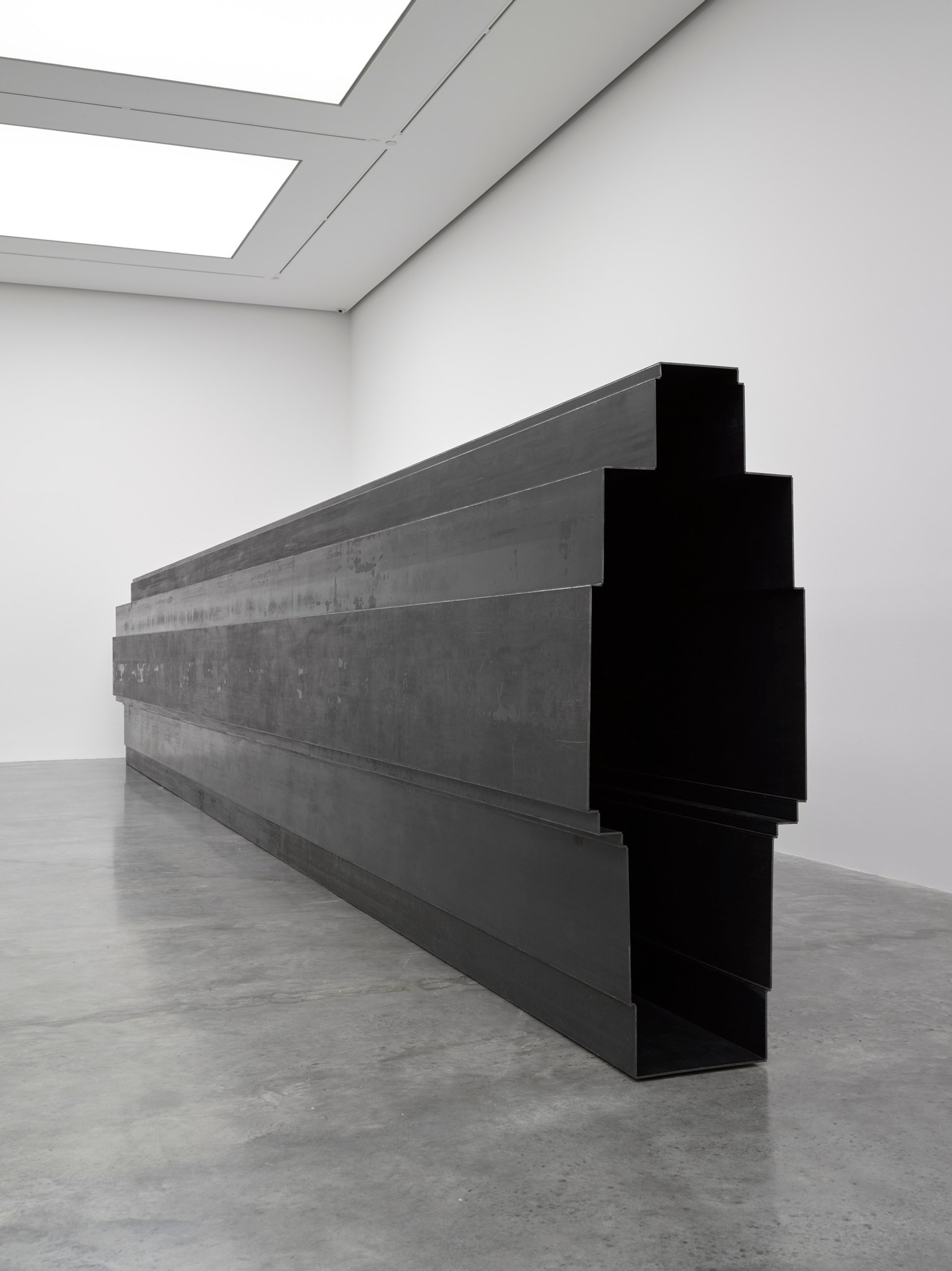“There’s no doubt we will be extinct at some point,” Antony Gormley says, adding a little more sanguinely: “But we have a choice about when that might be.” The British artist is speaking at the press preview of his exhibition, Fit, which opens today (30 September until 6 November) at White Cube in London, and deals with weighty topics such as inclusion and exclusion, corporate power, migrancy and our collective inertia at the prospect of the end of mankind.
Gormley is adamant, however, he is not a pessimist. “I don’t think one should give up,” he says. “You don’t make art without thinking you can change the co-ordinates of the possible. Making art is hopeful.”
The title of the exhibition, which consists of 15 labyrinthine chambers containing 24 mainly new sculptures, is about fitting in to social, urban or even national contexts. “Now that so many of us live embedded in the grid of the city, do we fit? Is it fitting to do so?” Gormley asks. “The show is an invitation but also an interrogation: who are we now?”
At the heart of the exhibition is Sleeping Field (2016), an installation of 517 iron blocks that are grouped to resemble recumbent bodies. The work appears like a cityscape from afar, but Gormley says it could also be “a view onto the Jungle in Calais at night or a holding station on the Syrian border”. The artist, who went to Beirut’s Shatila refugee camp in 1970—today home to 22,000 Palestinian refugees—says the camp known as the Jungle is “a complete indictment right in front of us”. He adds: “I feel powerless. It’s the same feeling looking down on Sleeping Field, there’s a situation right in front of us that we seemingly can’t do anything about.”

Sleeping Field was also inspired by the corporate expansion of London, which Gormley has witnessed first hand from his studio in Kings Cross. It’s a pattern being repeated around the world. “In every capital city there’s an exploitation of habitat for commercial gain that is very separate from an understanding of community as a good thing in its own right,” Gormley says. “Who is going to live in these five-star condos and are they going to contribute to the richness of our collective lives?”
Death and the possibility of an afterlife are evoked in Passage (2016), a dark tunnel created in the same shape as the artist’s body that viewers are invited to walk down. From within the sculpture, the brightly lit gallery resembles a light at the end of a tunnel. Describing Passage as “probably the simplest work” he has ever made, Gormley says the experience “is a metaphor for the journey that all of us are on: to the dead end”.
The last sculpture in the show is Set (2016), a work Gormley says sums up his challenge over the past 30 years: how to use the language of Modernity—Mondrian’s grid—to evoke or interrogate the human condition. “Set shows there has been an evolution; we can use sculpture as a measure or diagnostic instrument to reinstall the body in art.” he says. “The body was rejected by Modernity; by losing the body we lost affect. One of the powers of art is how it affects us emotionally.”
Another of its powers is that art is intrinsically political, according to Gormley. The artist says he is just as political now as he was as a student in the 1960s—perhaps even more so in the face of a “bizarre nationalism” that is so prevalent today. Although Gormley’s focus has changed slightly. “Where once I would have gone on protest marches, the best thing I can do is attend to the work at hand, which is to make reflexive instruments. Whether they are of any use is up to you lot,” he says.



